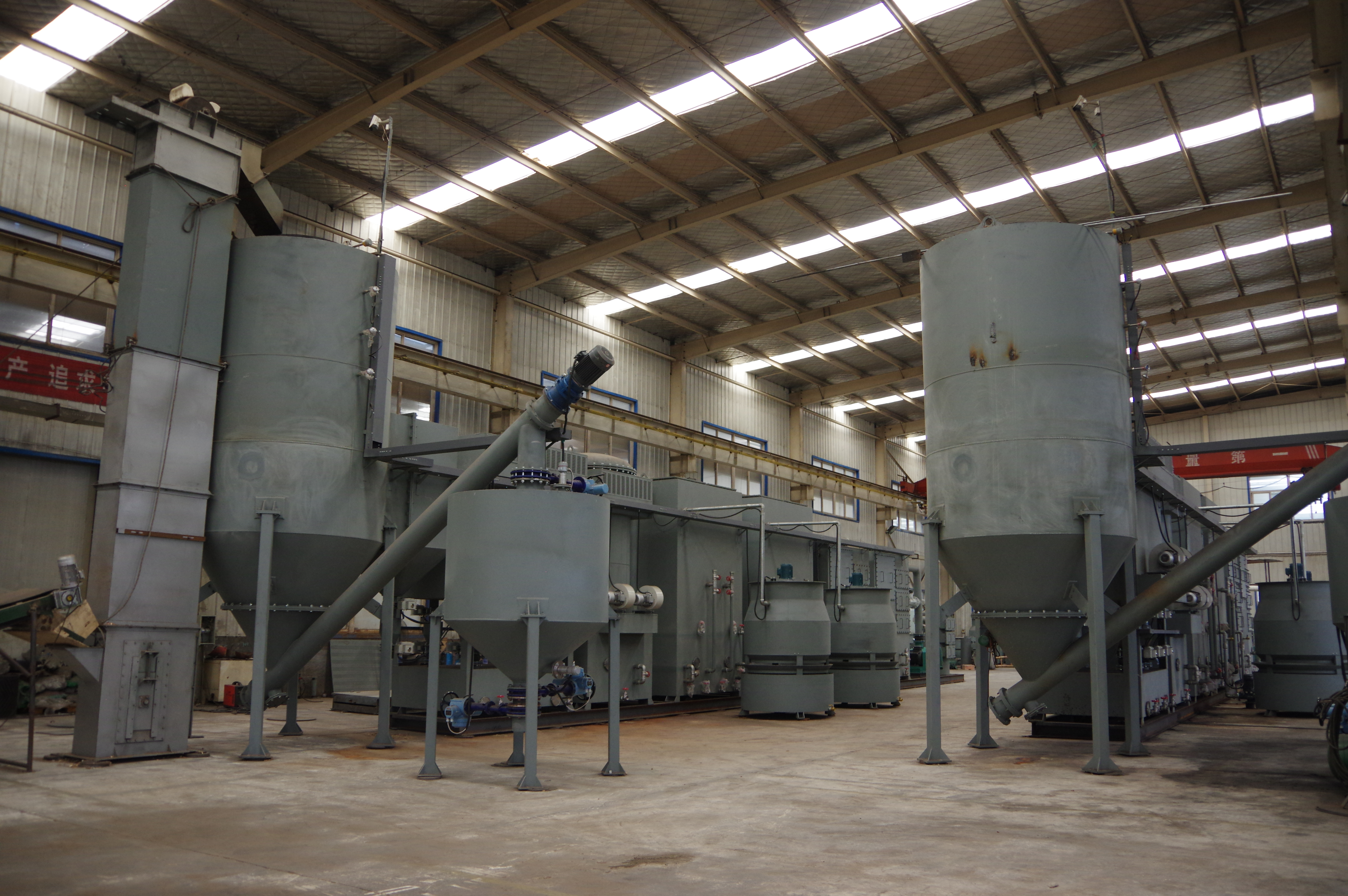What is the operating principle of biomass gasifier? The reaction process of different biomass is also different, and common biomass gasification furnace reactions can be divided into oxidation layer, reduction layer, cracking layer, and drying layer.
1. Oxidation reaction. The main reaction in the biomass oxidation layer is oxidation reaction, where the gasifying agent is introduced from the lower part of the grate, absorbs heat from the ash layer, and enters the oxidation layer. Here, a large amount of carbon dioxide is generated through the combustion reaction of high-temperature carbon, while releasing heat. The temperature can reach 1000-1300 degrees Celsius. The combustion in the oxide layer is exothermic, and this reaction heat provides a heat source for the reduction reaction, material cracking, and drying in the reduction layer.
2. Reduction reaction. The carbon dioxide and carbon produced in the oxide layer undergo a reduction reaction with water vapor.
3. Cracking reaction zone. The hot gas generated in the oxidation and reduction zones heats the biomass through the cracking zone during the rising process, causing the biomass in the cracking zone to undergo cracking reactions.
4. Dry areas. The gas products passing through the oxidation layer, reduction layer, and cracking reaction zone rise to this zone, and the biomass raw materials are heated to evaporate the water in the raw materials, absorb heat, and reduce the generation temperature. The outlet temperature of biomass gasifiers is generally 100-300 ℃, and the oxidation and reduction zones are collectively referred to as the gasification zone, where gasification reactions mainly occur. The cracking area and drying area are collectively referred to as the fuel preparation area.
The fuel for biomass gasifiers is mainly composed of cellulose, hemicellulose, and lignin. Due to the low compressibility of lignin, the combustion characteristics of biomass gasifiers and coal-fired boilers are also different. The editor reminds you to pay attention to the following when using biomass gasifiers.
1. A higher drying temperature and longer drying time are required. Due to the high moisture content and poor density of the briquette raw materials in biomass gasifiers, it is easy to cause high moisture content. Therefore, biomass gasifiers require higher drying temperature and longer drying time during combustion.
The fuel of the biomass gasification furnace is compressed from the original biomass, with a large windward area, a large combustion share in the suspension section, and a very loose structure. During combustion, it is easy to cause a large windward area and a large combustion share in the suspension section.
3. Can't stop for a long time. Due to the low temperature level inside the biomass gasifier, it is difficult to organize stable combustion, and prolonged shutdown can easily cause stalling.
4. Sufficient air is required during the combustion process, and the ignition temperature of biomass gasification fuel is low. Generally speaking, when volatile matter precipitates at 250 ℃~350 ℃ and begins to burn vigorously, a large amount of air is required. If the air volume is insufficient at this time, it is easy to increase the loss of chemical ineffective combustion.
5. Biomass gasifiers with low ash melting points generally have lower ash melting points because the fuel contains more alkali metals (K, Na). When the volatile analysis shows that the coke particles are burned out, it may be difficult to burn out and burn too slowly due to the influence of ash and air infiltration.

 Hot News
Hot News
Copyright © Qingdao Kexin New Energy Technology Co., Ltd. All Rights Reserved - Blog - Privacy Policy